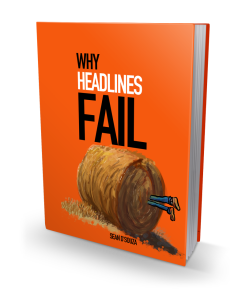Is Your Business Card Working to 55% Potential?

Who’d ever think of branding and positioning for a business card
You should, if you’re expecting to maximise your impact. It’s no use having a fancy looking card that does nothing for you. These branding principles will help you not only make a great first impression, but will also make sure your card stays put in their Rolodex!
Who Are You And What’s In It For Me?
Design is all very fine in a business card, but what about your positioning? How is your business unique when compared to other businesses? And how does it help the receiver of the card?
It’s something you must take the time to think about, because that positioning plays a prominent part in a business card. For instance, we had a client who fixed computers.
Now there are a dime a dozen computer people out there, but his business became extremely defined when he positioned himself. It now said XYZ Computer Company-Taking the fat out of computers. That positioning not only defined what he did, but it established his usefulness to them in a very precise manner.
Graphic Design That’s Not National Geographic!
Some people stuff everything into their card design. Your business card is not a map; it’s often the first impression people get of your business. Which is why simplicity pays. Follow the principle of 3.
Don’t exceed 3 elements, 3 fonts and preferably 3 colours. People find it hard to concentrate on a large number of elements and your central message gets lost in a mishmash of colour and fonts.
Sort Out The Information
What do you need? What can you drop? Which number is most important? Which pieces of information do you group together? Do you really need that postal address or can you relegate it to your letterhead (where you have more space). Take hard decisions and keep only what’s totally necessary to get in touch with you.
Give Your Card A Backbone!
Your card has two sides. Make sure you use both. It might just be an explanation of what you do, or some useful information, or even a discount of sorts. You can convey a lot more on the back because you don’t have the restriction of contact details and visuals.
Coke Does It. Nike Does It. Why Don’t You?
Everyone knows a picture says more than a thousand words, yet they fail to apply it in real life. Visual branding is extremely important. Look at McDonalds–
Their double arc is everywhere, and you know at one glance where to find your next burger. Use the same concept for your business card and spend time and money to develop a strong visual branding image. It pays off in the long run.
Who Are You, Mr.Font?
Zillions of fonts float around, yet only some can define the style and mood of your company. Fonts vary from flowery, strong, elegant, to loud and extreme. Be sure to use stark contrast in typography.
This can be done by varying type size, weight, colour or style or a combination of these. Also, consider the fact that people with spectacles are going to read your information. Make sure your font size is legible enough. It’s no use having all that information, if no one can read it.
And Now For The Final Run
Always check with your printer before printing. A serif font might not be the best to use in 6 point. If your fonts are going to be really tiny, you’re better off choosing a sans serif. First print it out on your laser or desk-jet printer. Test it on your colleagues. If it doesn’t work with them, it’s never going to work.
Give Out Your Cards Like Candy
Use your cards to get yourself known. The best opportunity to get a card from a potential client is to give yours first. Use it when you’re paying bills, in elevators or just about anywhere.
If it’s attractive, informative, well branded and positioned, most people will hold on to it and use it to give or refer business back to you!
Next Branding Article: Mona Lisa Your Branding
Next Step: Read actionable articles on branding.

